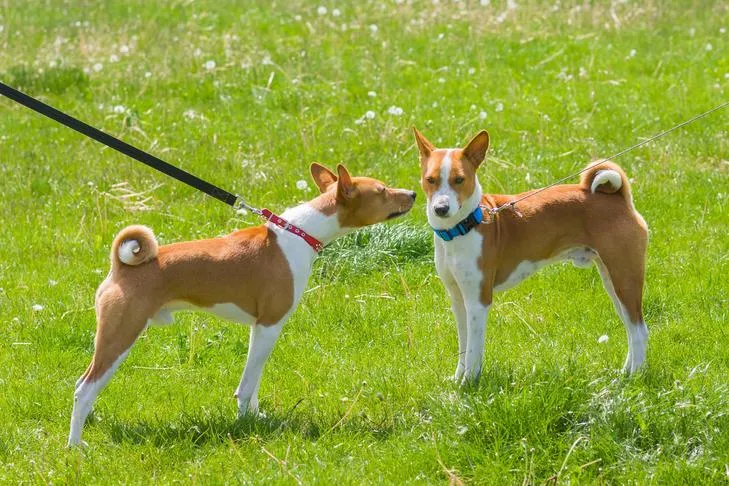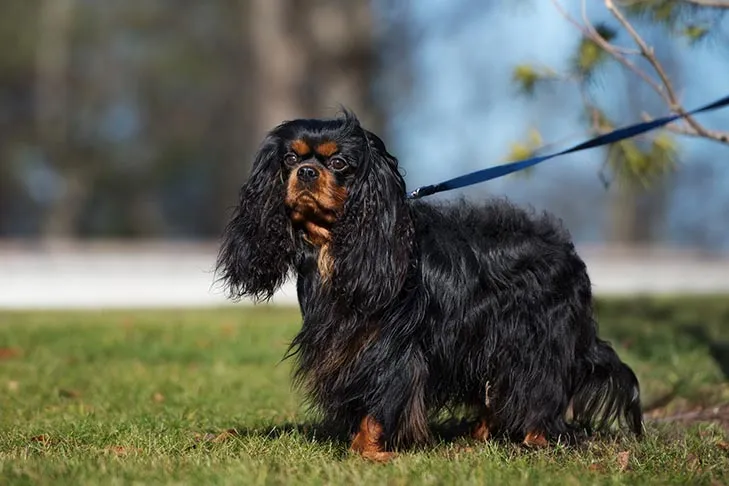Pulling on the leash is one of the most common and frustrating issues dog owners face. It can turn a pleasant stroll into an exhausting battle, and for larger dogs, it can even lead to injury. But don’t despair! With consistent training and a few key adjustments to your approach, you can transform your dog’s leash manners. This guide will walk you through effective strategies to teach your dog to walk politely by your side, making every outing enjoyable for both of you.
Leash pulling not only makes walks unpleasant but can also be dangerous. It’s against the law in most public areas to let your dog off-leash, and it poses risks like altercations with other dogs or your dog running away. A leash gives you crucial control over your dog’s interactions and environment. The good news is that even though leash pulling is a widespread problem, there are simple, effective techniques to curb this behavior. By implementing these strategies and being mindful of your own actions during walks, you can ensure that your dog is walking with you, not the other way around.
Reward Excellent Leash Etiquette
Never overlook or take for granted your dog’s good behavior, especially when it comes to walking nicely on a leash. Dogs are motivated to repeat actions that bring them rewards, whether that’s a tasty treat, enthusiastic praise, or the opportunity to explore an interesting scent. If you solely focus on correcting negative behaviors and ignore the positive ones, your dog might resort to less desirable methods to get attention or achieve their desires.
Whenever your dog is walking calmly by your side with a loose leash, make sure to acknowledge and reinforce this behavior. Carry treats on your walks or be ready with pets and verbal encouragement. Be generous with your rewards. Let your dog know you value their chosen behavior. Initially, reward frequently and generously. As your dog’s skills improve, you can gradually decrease the frequency of treats, substituting them with the chance to sniff a bush or greet another dog politely.
Never Walk When Your Dog is Pulling
Your dog’s desire to move forward is the primary reason they pull. If you allow them to continue walking while they’re pulling, you’re inadvertently rewarding them with exactly what they want. Since dogs tend to repeat behaviors that lead to rewards, this will only exacerbate leash pulling in the long run. Therefore, the golden rule is: never walk when your dog is pulling on the leash. The moment you feel tension on the leash, stop walking. Plant your feet firmly and wait. Wait for your dog to either return to your side or slacken the tension on the leash.
 Two Basenji dogs meeting outdoors in a grassy field, one with a leash.
Two Basenji dogs meeting outdoors in a grassy field, one with a leash.
Wait for a Loose Leash Before Proceeding
If you’ve stopped walking due to pulling, how do you know when to resume your journey? The signal is a loose leash – it should hang in a gentle J-shape – and your dog should have redirected their attention back to you. In the initial stages of training, this might take some time. However, your dog will eventually look back or walk towards you to see what’s causing the pause. At that precise moment, offer praise and a reward at your side, then continue the walk. You might find yourself stopping and starting with every few steps at first. Your dog will soon learn that pulling halts the walk, while polite leash walking allows it to continue. This is a crucial step in how to get your dog to stop pulling the leash.
Incorporate “Life Rewards” into Your Walks
Walks should be an enriching and stimulating experience for your dog, not just a necessity for bathroom breaks. Dogs need physical exercise and mental stimulation during these outings. When you’re actively training your dog not to pull, it might feel like these enjoyable aspects are being sidelined. A fantastic way to enhance your training while simultaneously enriching your dog’s walks is by using “life rewards” for adhering to the rules. Life rewards are everyday pleasures your dog enjoys, such as the opportunity to sniff a particular shrub or greet a friendly stranger. For instance, if your dog walks ten feet without pulling, allow them a few minutes to explore scents. These bonus rewards will powerfully reinforce the idea that walking politely is highly beneficial.
Maintain a Brisk Walking Pace
For many dogs, human walking speeds are often too slow. Even small breeds can move their legs much faster than we typically stroll. This difference in pace is a significant factor contributing to pulling – they simply want to move faster! To help your dog feel more engaged and invested in the walk, try to find a pace that is comfortable and enjoyable for both of you. While it’s certainly possible to teach your dog to match your speed, during the initial training phases, a slightly quicker pace can make it easier for them to learn to refrain from leash pulling.
Be Unwavering with Your No-Pulling Rule
It can be incredibly tempting to let your dog pull when you’re in a hurry. Perhaps you’re running late for work, or the weather is extremely cold, and you just want to allow them a quick potty break. However, it is essential to be consistent with your no-pulling rule, regardless of the circumstances. Any instance where you permit your dog to pull on the leash will undo your previous training efforts, essentially sending you back to square one. Until your dog can walk more than a few feet without pulling, it’s best to let them relieve themselves in the yard or at the curb and save the longer walks for when you have dedicated time for training.
 A Beagle on a leash, pulling forward to sniff something on the ground during an outdoor walk.
A Beagle on a leash, pulling forward to sniff something on the ground during an outdoor walk.
Keep Training Sessions Short and Enjoyable
Working with a dog that persistently pulls on the leash can be a source of frustration. In the early stages, you might not progress further than the end of your driveway. Instead of pushing your dog to the point where both of you become irritable due to a lack of progress, it’s far more effective to keep your training sessions brief and positive. Puppies, in particular, have very short attention spans, and demanding too much too soon will not yield positive results. Remember, your primary goal isn’t to cover a specific distance but to achieve a loose-leash walk, even if that’s just to the next house. For those struggling with specific issues, understanding how to stop dogs jumping on couch can be part of a broader training strategy.
Be Engaging and Interesting on Walks
The world outside is a wonderland for dogs, brimming with new sights, sounds, and especially smells. This means there are countless stimuli vying for your dog’s attention, tempting them to drag you down the sidewalk. If you’re engrossed in your phone or otherwise inattentive to your dog, they have little incentive to focus on you. However, if you make yourself interesting and worthy of observation, your dog will be more inclined to follow your lead. Engage in conversation with your dog, incorporate brief training exercises, pause for a quick game, and so on, so your dog is always anticipating your next move.
Maintain Composure
 A Cavalier King Charles Spaniel on a leash outdoors.
A Cavalier King Charles Spaniel on a leash outdoors.
During walks, you’re likely to encounter numerous emotionally charged situations. Whether it’s spotting a beloved neighbor or the approach of a barking dog, your emotional state is critical. Regardless of whether the situation is exciting or frightening for your dog (and for you), it’s imperative to control your emotions. Dogs are incredibly adept at reading human emotions, so your mood can easily transfer through the leash, amplifying your dog’s excitement or intensifying their anxiety. To help your dog remain calm, stay calm yourself and convey that there is no cause for alarm. The more relaxed your dog is, the more receptive they will be to your guidance and the better their behavior will be. For those dealing with issues like a dog that jumps on them, maintaining a calm demeanor is also key.
Engage Your Dog During Distracting Situations
When you encounter distractions such as other dogs or squirrels, it’s easy for your dog to forget their training and resort to leash pulling. This is also true for things your dog finds suspicious. Perhaps strangers make your dog nervous. Your dog might pull forward to approach or pull in the opposite direction to retreat. In either scenario, leash manners can quickly go out the window.
To help your dog manage distractions effectively, redirect their focus back to you. Calmly offer them treats or engage them in a game. For example, ask for a sit or a hand target. These exercises are simple for your dog to perform and will keep them engaged as the distraction passes. You can also teach your dog to make eye contact using the “watch me” cue, which allows you to control their gaze. Be proactive; capture your dog’s attention before they notice the distraction, and ideally, they won’t even register it. For specific concerns like how to get my dog to pee in the garden, consistent routines and positive reinforcement are also vital.
If you require expert guidance from experienced trainers or have further questions about dog behavior and training, please visit the AKC GoodDog! Helpline page for online chat or to register for the GDH program.
The AKC GoodDog! Helpline is celebrating a decade of supporting dog owners. If you need assistance, the experts at AKC GoodDog! Helpline are available via phone or video to address any training questions that arise, from puppy housetraining to managing unwanted behaviors in senior dogs. Join the nearly one million dog owners who trust the AKC GoodDog! Helpline today.
